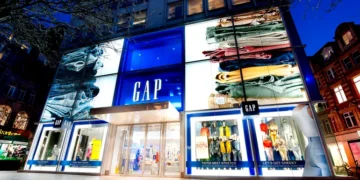Opinions expressed by Entrepreneur contributors are their own.
As the product-led growth (PLG) motion becomes increasingly more popular, the process will mature as will the strategic process of acquiring customers. The stages of customer acquisition are becoming ever more apparent in line with the flywheels of both the PLG process and the inbound marketing strategy.
The PLG flywheel has four stages; activate, adopt, adore and advocate. The inbound flywheel has three; attract, engage and delight. Each of these spins faster the more you learn, test and iterate for long-term success. Yet none of these reflects the principles of product-led onboarding in my mind.
Related: How Customer Enablement Drives Product-led Growth
The stages of onboarding for B2B PLG organizations
To set the scene, onboarding does not start at the point someone signs a contract or inserts their credit card details. Onboarding is widely agreed to start at the first touchpoint in any channel your organization owns. This could be an ad, a social media post, an event or a speculative email, for example, and each of these must set the tone or trend for the following activities and actions. So, what are the four principles?
-
Marketing onboarding: making the unfamiliar familiar
-
Platform onboarding: familiar to the freemium user
-
Value onboarding: freemium to paid user
-
Peer-led onboarding: paid user to product champion
For each principle, there are corresponding tactics and strategies — some of which can be applied in silos, and others perform best when used in a cumulative or combined strategic approach. Let’s discuss these in more detail.
Marketing onboarding principles for PLG companies
The very first stage of onboarding for product-led companies is marketing. From here, there is a natural flow to take strangers to champions. But what does that look like, and what is the best strategy focusing on B2B SaaS? For me, it’s the inbound marketing strategy, but let’s look at some of the channels you can adopt:
You can dominate a single channel alone, but that may not prove beneficial to your longer-term goals. For many, content marketing is the price of admission to sit at the table, but for content to succeed in today’s overcrowded online world, you need email marketing to support it, paid advertising to promote it and social media marketing (both organic and paid) to distribute it.
Therefore, a multi-channel persona-led inbound marketing strategy is the only choice. Unless, of course, your PLG platform also sells to the enterprise, and then you will require both an inbound and account-based marketing strategy for continued success. Beyond this, you need a strong messaging strategy on your website’s copy that will drive your new interested parties to start to try your platform.
Related: Inbound Marketing — What is it and Why Does it Matter?
Platform onboarding principles for PLG companies
Once you’ve fully optimized your marketing strategy (which can only happen over time as you collect and use your data) you want to fully optimize your onboarding process. To do this, you need to use a recognized framework or combination frameworks like:
Nail this stage of the onboarding process and your customer acquisition program will be heating up. Not only have I given you the playbook on PLG onboarding here, but I’ve also given you the tools to do it — and I’m not done yet.
Value onboarding for product-led SaaS
The articles I’ve shared with you in the hyperlinks will give you and your team more value guidance and context for sure, but there’s another stage to optimizing onboarding and that requires tools. These tools come in the form of:
-
Pendo
-
Userflow
-
Chameleon
-
Heap
-
Amplitude
-
Mixpanel
-
FullStory
There’s also a whole host of other tools to help you understand if your product is delivering the value you set out to deliver, where the bottlenecks are and how you can deal with them. Optimizing your PLG platform for value is how you minimize the time that your freemium users take to recognize the true value of your product.
Keep optimizing to deliver ongoing value and to understand how to build and focus on future product and/or feature releases.
Peer-led or peer-to-peer onboarding for product-led organizations
The final principle of onboarding is to optimize your platform’s ability for your champions or cheerleaders to invite their friends and colleagues. Whilst incentives are always good, ultimately, you want to build a product so good, so valuable and so necessary that your best users can’t help but talk about you and hype you up.
You want these users to tell their stories and have your platform as a hero in the story. So, how do you do that? The likelihood is that if you nail the first three, this one takes care of itself. However, your job is not to become complacent but to treat this onboarding phase like a partnership channel — one that is driven by a user community, not a sales team.
You can add the ability to invite and share from their account, that’s pretty much standard these days, but ask your team this question: How do we enable our best users, the champions and cheerleaders, to easily invite and onboard new users on our behalf? Figure that out through a champions committee or something similar, and you’ve nailed the four stages of PLG onboarding.
Related: How to Turn Strangers into Loyal Customers With User Onboarding
I hope you enjoyed this take on the four principle stages of onboarding for product-led growth platforms and that I’ve given you enough for you to go back to your teams and refocus your efforts. Using this framework will allow your organization to become more embedded and cross-functional, which can only prove beneficial for the entire go-to-market motion.
Read the full article here














